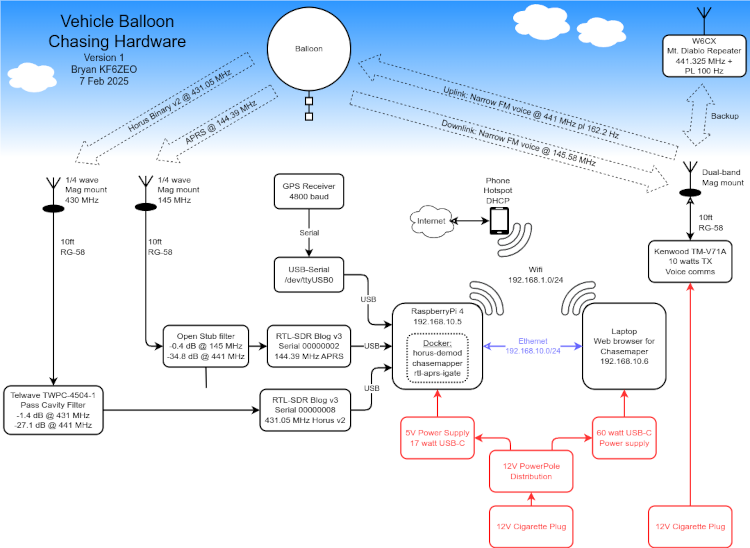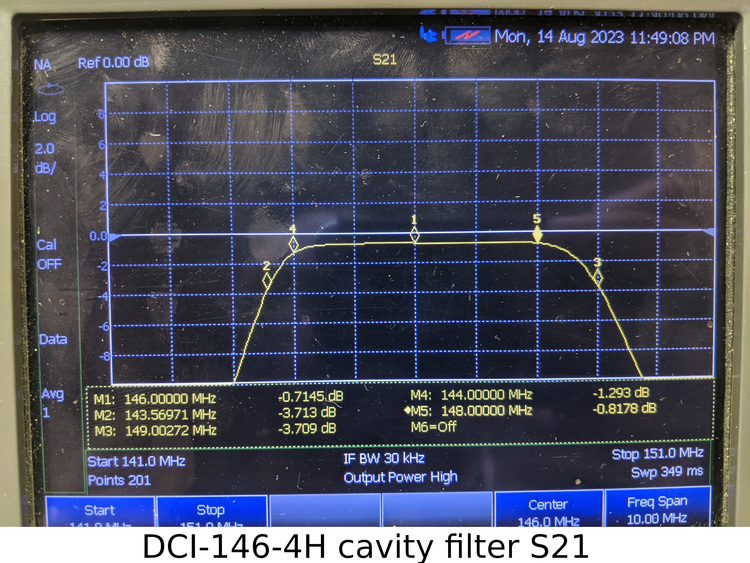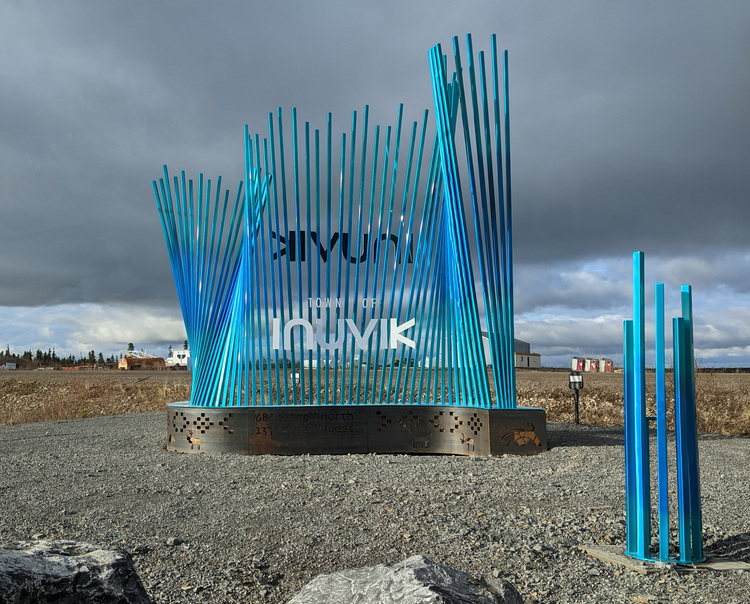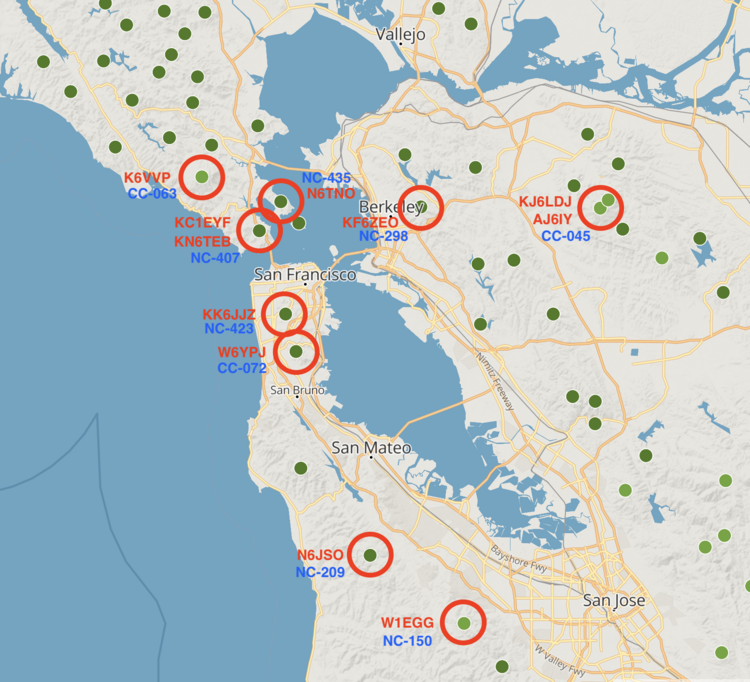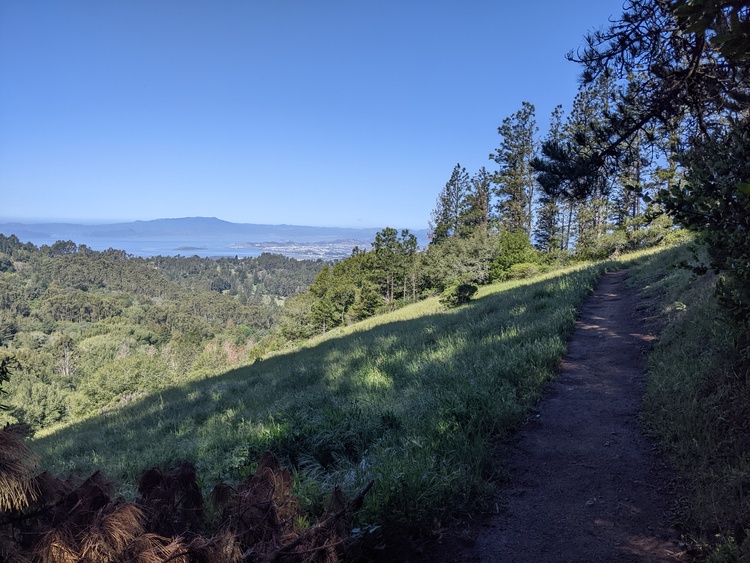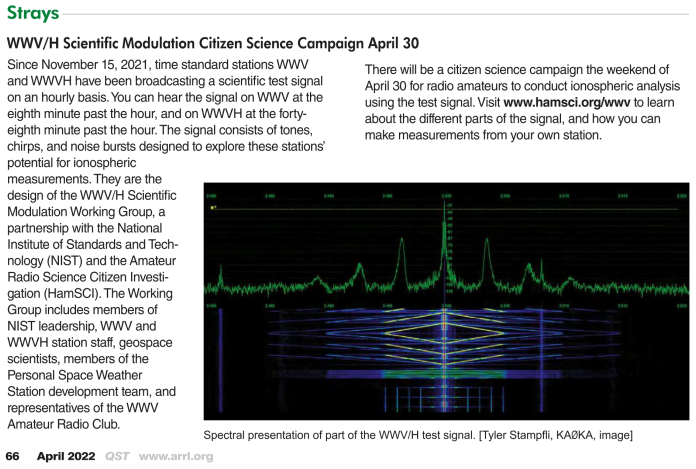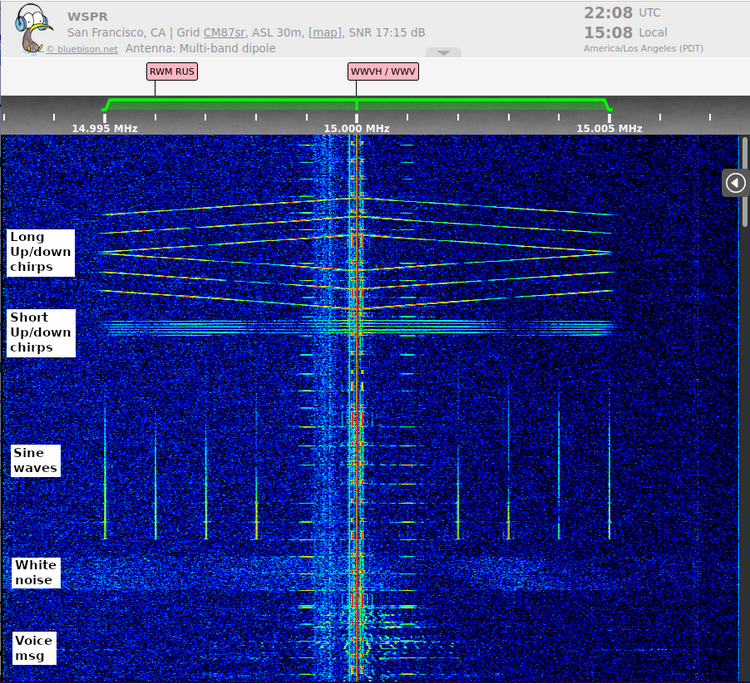After the previous December HAB launch, I realized that I needed to spend some time on my receive hardware setup in the car. I previously had a VirtualBox VM running Horus-GUI and headless horusdemodlib, but it was very much a kludge. As an upgrade, I wanted to add APRS reception for the balloon 2 meter APRS tracker.
In order to keep track of all the hardware required for this, I created a block diagram using draw.io desktop. Click to make bigger.
The next sections will describe the different parts of this setup.
RF Filtering
I quickly realized that having two RTL-SDR dongles in close proximity to a 10 or 50 watt transmitter might cause problems. It would certainly desense the receivers during transmission, but it also might cause permanent damage to the dongles. Permanent damage is hard to diagnose because there's no error message saying "broken," it just doesn't receive weak signals (or any signals at all).
Filtering the 441 MHz voice transmission out of the 144.39 MHz APRS receiver is pretty easy, as those frequencies are very ...
Read More →